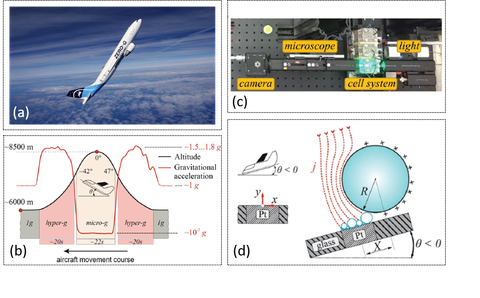Water --> Substance
Gray, green, white, pink... the colorful world of hydrogen (H2)

Produktiver H2 - Biofilm. Die grünen Zellen produzieren Wasserstoff aus Licht und Wasser, die anderen Bewohner stabilisieren den Biofilm und bilden das Haus, in dem die H2 Produzenten gedeihen können.
Hydrogen comes in many colors, but the molecule is colorless. The color box of hydrogen refers to how it is produced, and in the TPB we develop concepts to produce white hydrogen. So what is 'white hydrogen'? This is what we call hydrogen produced by bacterial cell factories. The cells perform photosynthesis like green plants and obtain everything they need to produce hydrogen from light and water. To realize a continuous process concept, the Chair of Technology of Productive Biofilms uses the natural property of many bacteria to attach themselves to phase interfaces. They form so-called biofilms, three-dimensional bacterial communities composed of one or more different species. Within these communities, extremely stable networks can form tightly interwoven and characterized by outstanding robustness.
By working on these topics, our students gain detailed insights into one of the most significant challenges of our time and the necessary know-how to actively shape the transformation of our energy landscape. In addition, they learn to evaluate the potential of biological catalysts and harness it using state-of-the-art technologies.
Floating hydrogen bubbles
Production and using green hydrogen from renewable sources are central to our energy system. Hydrogen bridges the gap between the fluctuating power generation from renewable sources and the mostly time-delayed demand. Only by using hydrogen, e.g., as a reducing agent in steel production, will it be possible to reduce the CO2 footprint of industrial processes significantly. However, the large production capacities for green hydrogen required for this do not currently exist. The Institute of Process and Environmental Engineering (TPG and EVT) is working with industry in the lead project H2Giga to develop large-scale electrolyzers further so that green hydrogen can be produced more cost-effectively on a large scale. While the focus of our work here is on the rapid separation of the produced gas from the electrolyte, in other hydrogen projects, we are interested in what forces act on hydrogen bubbles? The dominant force is, of course, buoyancy. Since the hydrogen bubble is lighter than the surrounding electrolyte, it rises. Archimedes already discovered this 2000 years ago.
But what happens to the bubbles at the electrode when the buoyancy is "switched off"? This is exactly what is possible in the parabolic flight experiments in the zero-g Airbus (a). In the free-fall phase of the airplane (middle part in b), the acceleration due to gravity almost disappears. Not only the experimenters then float in the Airbus, but also the hydrogen bubbles (d). Temporarily switching off gravity allows a clearer view of the action of the remaining forces, which depend, among other things, on the charge of the bubble surface and its surface tension. During their studies, students always have the opportunity to participate in our "terrestrial" hydrogen experiments or to help set up (c) and perform parabolic flight experiments from time to time.

(a) Zero-g Airbus für Experimente unter Schwerelosigkeit, (b) Profile der Schwerebeschleunigung während einer Parabel des Airbus, (c) Optik zur Beobachtung von Wasserstoffblasen, siehe (d).
